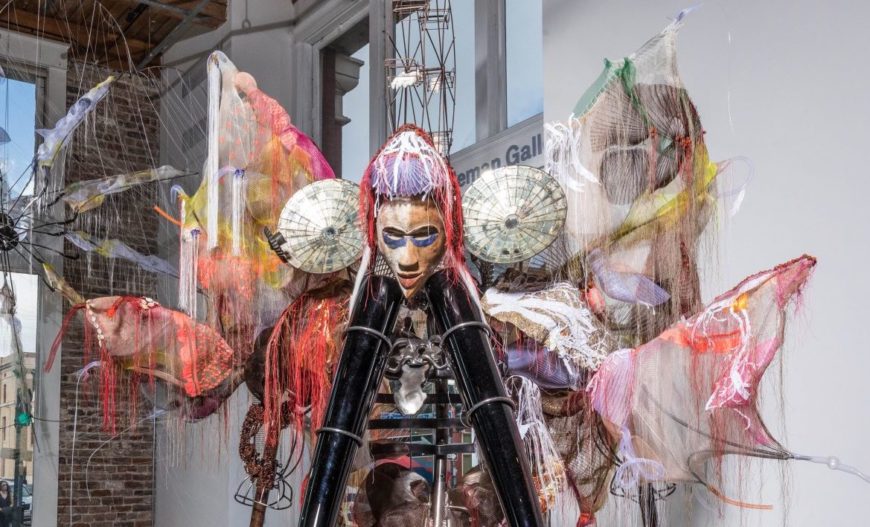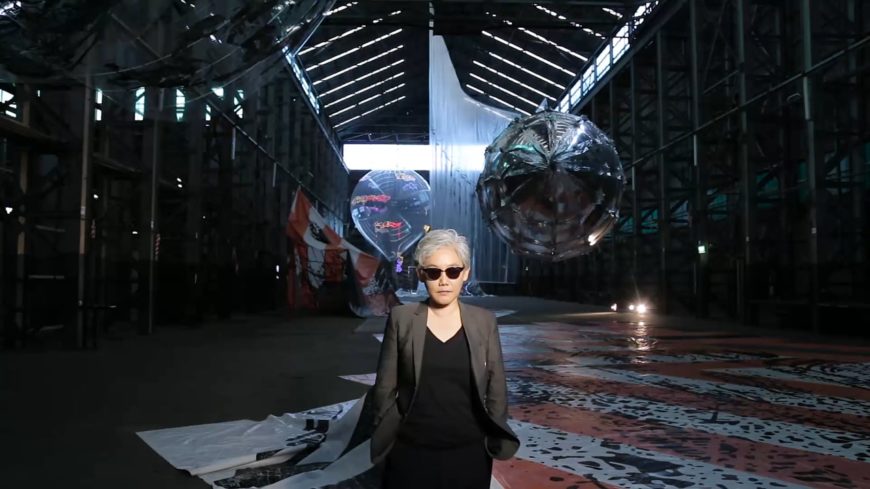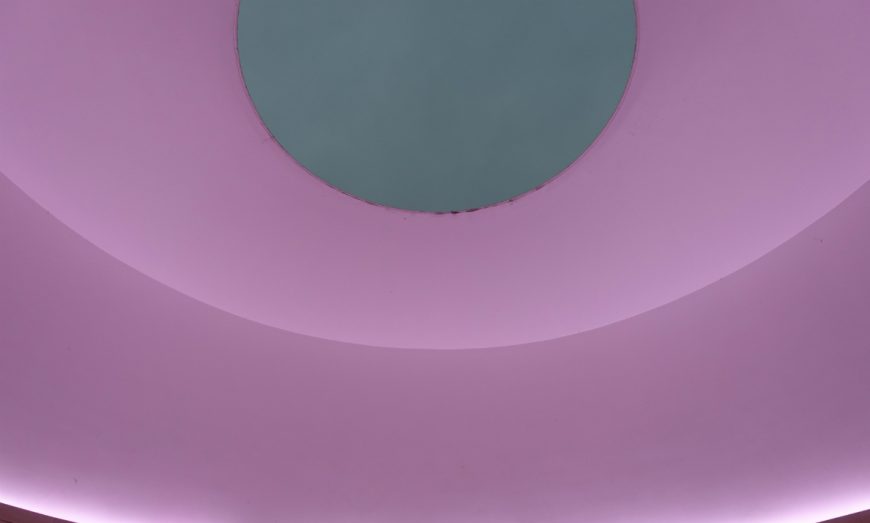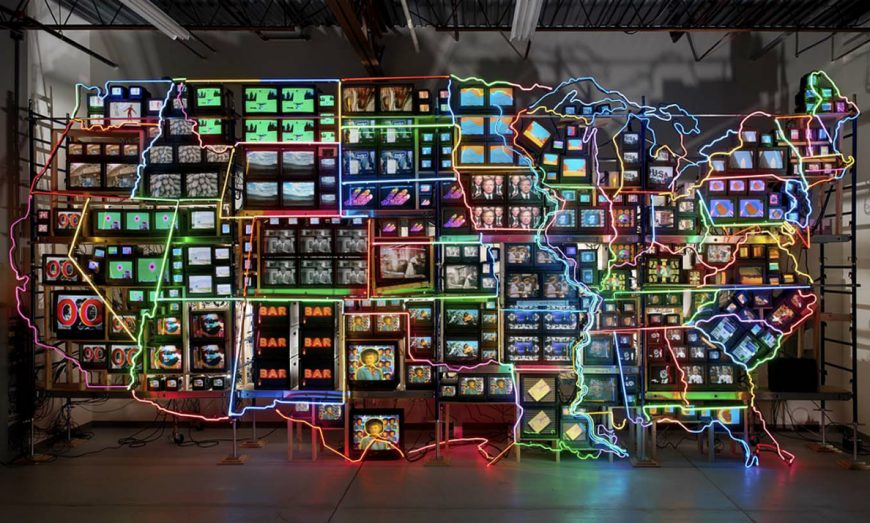Kusama’s installation of mirrors, orbs, and colorful lights simulates the feeling of ineffable vastness and infinity.
Yayoi Kusama, Infinity Mirrored Room—My Heart is Dancing into the Universe, 2018, wood and glass mirror room with paper lanterns, 3 x 6.2 x 6.2 m (Crystal Bridges Museum of American Art, Bentonville) © Yayoi Kusama. Speakers: Elise Raborg, Curatorial Associate, Crystal Bridges Museum of American Art, and Beth Harris
0:00:05.6 Beth Harris: We have the great privilege today to stand inside one of Yayoi Kusama’s Infinity Rooms. This is titled My Heart Dances into the Universe.
0:00:17.4 Elise Raborg: We talked when we first came into the installation about the experience of entering a Kusama Infinity Room for the first time. And this experience of feeling or witnessing this ineffable vastness and infinity.
0:00:32.2 Beth Harris: And of course, infinity is an impossible concept. But the use of mirrors and these hanging orbs that let light through them and change colors just slowly and subtly as we stand and move through the space, sometimes the colors merge together and are all related to one another, and sometimes they contrast with one another. So one’s experience is constantly changing, and it’s impossible not to want to take your photo here.
0:01:05.2 Elise Raborg: She has this way of capturing something that can be a little bit scary, like the sublime, like this concept of infinity and making it accessible and fun.
0:01:17.7 Beth Harris: The space has no feeling of boundaries, and that can be a very disconcerting experience. And yet Kusama’s rooms are incredibly popular. People line up for hours to visit one.
0:01:33.6 Elise Raborg: And she uses these bright colors and this language of polka dots. It sort of becomes this universal language that we all speak.
0:01:41.3 Beth Harris: The circle as a form that is perfect, a sphere, a form that has no beginning and no end, that reminds us of planets, of galaxies.
0:01:52.6 Elise Raborg: I think this room is unique in relation to some of her other Infinity Rooms in that the selfie moment is a little bit more obscured. It’s a little bit darker in here, and the orbs themselves physically obscure your image. It makes you feel small and insignificant, but in a really comforting way, like you’re a part of this bigger structure that continues on into infinity.
0:02:18.1 Beth Harris: Kusama has made 20 or so Infinity Rooms. But so much of what we see here is part of her practice, going back to the late ’50s, when she first arrived in New York, using small dabs of paint in her Infinity Net paintings. This idea of repetition, which we see, for example, in her accumulations, and then doing these smaller versions of these, where you looked into something, but ultimately these Infinity Rooms that one could step right into and participate in.
0:02:52.6 Elise Raborg: I’ve seen very few documentations of her work where Kusama herself is not in the middle of an installation, very much a part of the installation. And these Infinity Rooms invite the viewer to join her, to be in the middle of the art, to be a part of the art.
0:03:07.5 Beth Harris: In a way, she was doing selfies before there were even selfies. She did a series of herself in New York wearing a kimono. Her Narcissus Garden images where we see her lying amidst those silver orbs. And so that idea of watching oneself is important in her work and also centering herself. She was, throughout her career, probably by necessity, relentlessly self promoting. As a Japanese woman trying to make it in the art world, that probably was the only way you could do it. And she continuously innovated.
0:03:49.4 Elise Raborg: It’s also interesting how well the work translates to digital media and to social media and to the selfie age that we are in now. It’s this poetic and ironic phenomenon that the work continues to repeat and ripple out to infinity through the Internet and through selfies.
0:04:07.9 Beth Harris: I think Kusama’s Infinity Rooms satisfy that human desire for transcendence, for a kind of release from our bodies.
0:04:18.1 Elise Raborg: The way the Infinity Room makes you feel as though you’re in outer space, at the same time making you feel like you’re at a cellular level. I mean, this weird shift in scale that can happen in these Infinity Rooms lends itself to this fitting in and being involved in this greater system.
0:04:38.4 Beth Harris: When we were standing outside the room in the galleries, we were looking at the art on the walls and thinking about how sometimes works in a gallery, especially contemporary art, can be somewhat intimidating. You feel self conscious, maybe you get it, maybe you don’t. Uncertain about how you’re supposed to react to it. But that doesn’t happen here. You just get to be with it in a way that’s incredibly comforting.









